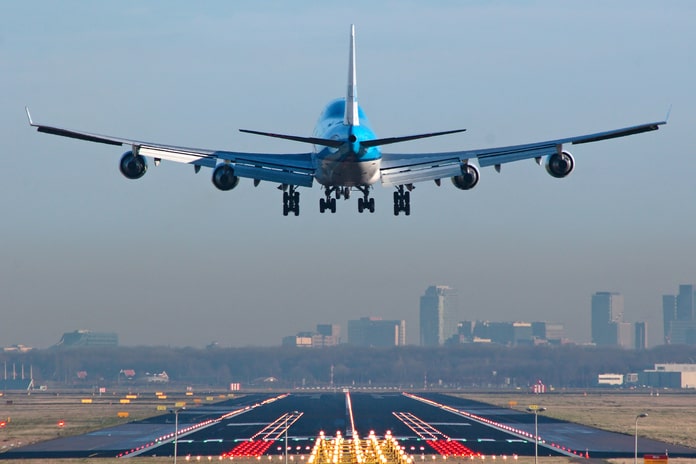On Wednesday, July 27, Boeing (NYSE:BA) released financial results for the second quarter prior to the market opening. After its earnings report, shares essentially traded flat.
The earnings report revealed that Boeing missed analyst expectations by $830 million when it posted revenues of $16.7 billion, down from $17 billion in the same quarter last year.
Earnings per share were negative $0.37 compared to the previous year’s $0.40, falling short of expectations by $0.27 million.
These Two Factors Result in Two Global Disadvantages for Boeing’s Profits
Boeing (NYSE:BA) reported positive operating cash flow, experiencing a large sequential improvement driven by a negative timing impact in the first quarter flowing through to a positive timing impact in the second quarter.
Free cash flow increased from a negative cash burn of $705 million last year to a cash burn of $182 million this year. As a result, the company is witnessing lower revenues and EPS than last year with higher cash flows.
Although Boeing’s deliveries jumped by 53% during the second quarter, its revenues only rose by 3%. Investors were not expecting those outcomes.
Based on the market valuations of the delivered commercial aircraft, Boeing (NYSE:BA) should have reported revenues that were about $1 billion higher.
Boeing did surpass some analysts’ predictions by $130 million, though it should be noted that current market prices are probably substantially lower than base values.
Unfortunately, Boeing Commercial Airplanes is still not profitable, but there has been progress. The anomalous production expenses for the Dreamliner, which Boeing continues to estimate would ultimately cost $2 billion, were reflected in the quarterly results as an expense of $283 million.
Therefore, Boeing (NYSE:BA) would have really turned a profit for the quarter even without this cost growth. In addition, Boeing spent $169 million more on R&D for BCA.
Increasing R&D
It’s encouraging to see that Boeing is increasing its R&D spending since eventually the corporation will need to determine whether to start its next program for commercial aircraft. Profits would increase if the R&D expenditures weren’t used today, but Boeing would face more difficulties in the future.
In other news, Boeing (NYSE:BA) now anticipates low 400s for MAX deliveries. It’s wonderful to have that guidance because it at least provides some clue, albeit it also suggests a gradual depletion of stockpiles given that Boeing hit a production rate of 31 aircraft per month and delivered 189 aircraft in the first half of the year.
In the second half of the year, there would only be a net decrease of 50 737 MAX jets from stockpiles, bringing the remaining deliveries to roughly 40 aircraft each month. Therefore, even though the demand for air travel is increasing, the inventory unwind is not accelerating. That is caused in part by the fact that China is still an untapped market for the MAX.
Revenues decreased by 10% as a result of Boeing (NYSE:BA) discreetly reducing the P-8 Poseidon’s manufacturing pace from 1.5 per month to 1 per month. Additionally, several unfavorable changes to development programs put pressure on the top line.
Cost increases for Boeing were $327 million: $147 for the MQ-25, $93 for the Commercial Crew Program, $51 for the T-7A Red Hawk production options, and $36 for the T-7A’s engineering and manufacturing development. Margin would be about 5% if these expense components weren’t there.
BDS Performance ‘Bad’
At BDS, the performance is not very good. It’s actually horrible. Though formerly regarded as the future of its military sector, Boeing’s Defense initiatives are today giving the company headaches and cost headwinds even though it is better than last quarter. Consequently, BDS was again another letdown.
Throughout the quarter, Boeing Global Services displayed strength. Growing flight hours, rising revenues, and a favorable mix are all signs that Boeing (NYSE:BA) is making progress in its long-term goal of extending its services offering.
Boeing’s debt decreased by $0.5 billion during the quarter, while cash and marketable securities decreased by $0.9 billion, which was partially due to investments, operating inefficiency, and debt reduction.
Most analysts aren’t characterizing Boeing’s Q2 numbers as either exceptionally good or terribly awful. Boeing’s revenues imply that planes are being sold for less than their basic value. Defense is performing poorly, but Global Services is performing better than expected.
The bottom line is investors should think carefully and do much more research before investing in Boeing (NYSE:BA).
Featured Image: Megapixl © Xiphias

















